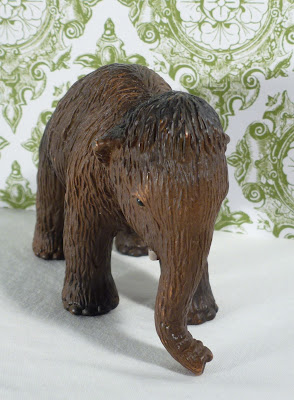After: This is an image taken with my first attempt at a photo studio. Cute, eh? It looks a lot better, however I still think it needs work - suggestions, please.
I am learning. Blogging requires a lot of effort and a diverse set of skills. There, I said it. To have a professional looking blog (in my opinion) I need to know how to write, how to create a web site, how to make the web site look good, how to promote my blog, and how to take good photographs. I am at the very beginning stages of my blog. Some professional bloggers suggest taking time to get all of these steps down pat before publishing a blog, but I am impatient. I want to blog now. I have decided to blog about all the steps I take to teach myself the techniques I need to make my blog a success.
The first step I will tackle is to get my photographs to look pretty. I do not know much about photography. I have a decent camera. I have been told I have a good eye for composition. I need to know how to create the images I want. Apparently, it is all about lighting and to get good lighting takes a photo studio. I plan to learn more about my camera and I am kind of working on that at the same time. I will document them both. But first, let's talk about how to set up a home photo studio for good lighting.
Problem: No natural light. The enviable bloggers who are kind enough to offer advice on how to create a home studio often like to use natural light to capture their fabulous images. Unfortunately, I work full-time outside of the home and I do not have much daylight during the week.
Problem: No natural light. The enviable bloggers who are kind enough to offer advice on how to create a home studio often like to use natural light to capture their fabulous images. Unfortunately, I work full-time outside of the home and I do not have much daylight during the week.
Solution: Create a Home Photo Studio with Tripod Lights. I am combining suggestions from research on the web to create a home photo studio. It is still very much a work in progress.
Tools:
- 2 tripod lights (do yourself a favor and buy the ones actually on a tripod)
- White backdrop (Use a cheap white sheet. You have to iron it, do not whine about it like I did)
- Aluminum Foil
- Cardboard
- 2 Spring Clamps
Steps:
- Place the tripod lights above the subject and point them down onto the subject creating minimal shadows.
- Move the subject around to get the best lighting.
- Use the aluminum foil to bounce the light back onto the image.
The result is a crisp, bright image.
For great lighting and DIY studio information, check out the tutorials on these two sites:
Handmadeology
and
ClickinMoms
Verdict:
I think I can do better. Next, I will make a light box to compare. I came across some nice tutorials that are inexpensive, easy and seem to give the result I am seeking.
Stay tuned for more experiments: Creating a Light Box, Camera settings, Fluorescent Lighting, Natural Lighting, Butcher Paper, Tracing Paper.

























